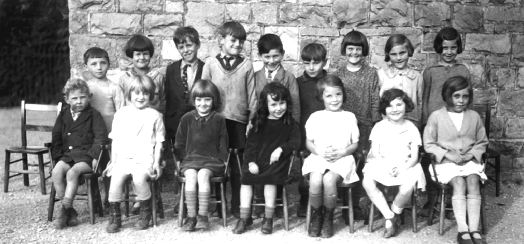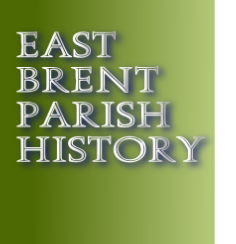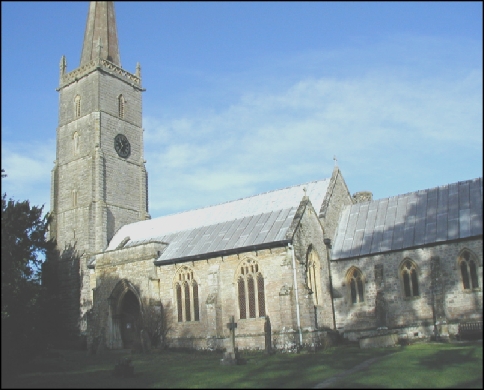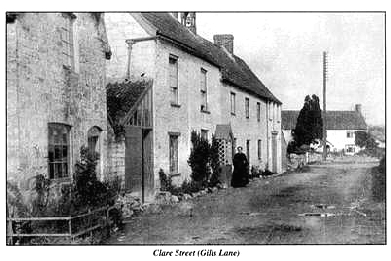


The Church of St Mary the Virgin at East Brent
Go to...
|
|
|
|
|
|
|
|
|
|
|
|
|
|
|
|
Hover your mouse over
‘Places’

A short history by
Penelope Harris
Published by the PCC of
St Marys Church East Brent Somerset.
With additional information by Paul Kingdom
Penelope Harris
Published by the PCC of
St Marys Church East Brent Somerset.
With additional information by Paul Kingdom
The first mention of East Brent is in a charter of 693AD under which King Ina of the West Saxons gave ‘Brentmarse’ to the Alnod Abbot of Glastonbury. The Abbey held it until the dissolution in 1539. At the time of the Doomsday Book (1086) it is recorded that there were a total of 46 houses in the parish. A priest called Godwin was resident in the parish.
In 1203, one Martin de Summa was parson, he was followed by Gilbert of Sarum who was vicar in 1262 and was given a pension by the Abbot in return for land on the Knoll.
Once the Normans had invaded, many tiny parish churches were demolished and replaced by bigger, more elaborate buildings. East Brent was no exception.
A new church, the current building, was started in the late thirteenth century and by 1298 when Rogerus became vicar, most of the nave had been built. The tower and the spire were added about a century later. The oldest two bells still in use date from 1440 and 1450.
Abbot John Selwood was vicar from 1467 to 1493. As well as building himself a manor house adjacent to the church (demolished in 1708), he also brought from Glastonbury most of the pews. These bear his initials and are rich in fine carvings. The carved wooden eagle lectern dates from this period. It is one of the few surviving wooden medieval lecterns in England. There is also some fine fifteenth century stained glass.
There was a wave of activity in the church in the reign of Charles I during the incumbency of Philip Malet. In 1634 the pulpit was acquired and the following year a gallery. The fine lath and plaster ceiling of the nave with a blackberry thorn motif was added in 1637 by Italian craftsmen.
1840 to 1845 saw the short incumbency of William Towry Law and the rebuilding of the chancel. It is likely he was responsible for obtaining the already second hand tower clock which still tells the time for the village. In 1841 the first school was built.
The vicar for 51 years from 1845 to 1896 was Archdeacon George Anthony Dennison. A colourful High Church Victorian who was once tried for heresy. Following an epidemic of diphtheria he was responsible for the damming of the spring and the stream on the Knoll and so provided the village with its first supply of clean drinking water. However, his greatest claim to fame, together with churchwarden John Higgs, was the foundation in 1857 of the famous East Brent Harvest Home that is still carried on today in much the same tradition.
Another more recent incumbent which must be mentioned was the the Rev. Archdale Palmer Wickham. vicar of St Marys from 1911-1935. He was tremendously popular. He even had a road in the village named after him! He played major first class cricket for Oxford University and later as wicketkeeper for Somerset CC. He was also a knowledgeable entomologist. On his death in 1935 his study notes manuscripts and collection of butterflies and moths were lodged at the British Museum.
On the north side of the chancel is a stained glass window dedicated to the Rev. Wickham depicting his love of cricket and wildlife. The new church gates replaced in 2005 were dedicated to the Rev. Wickham.
Paul Kingdom
Also part of the rectors living was from the Chapel of the Good Shepherd in Gills Lane, Rooksbridge. Which was in regular use for worship until the 1940’s
Conveyance of the Chapel of the Good Shepherd at Rooksbridge was given by the executors of the will of Rev. F.S.P. Seale to the Bath and Wells Diocesan Trustees. In 1912,
In this late 1800’s image, the bell can just be seen!
Chapel of the Good Shepherd at Rooksbridge
A 12th Century Church
Church Road East Brent
Part of the United Benefice of Brent Knoll, East Brent and Lympsham.
Church Road East Brent
Part of the United Benefice of Brent Knoll, East Brent and Lympsham.

| William's letters home |
| Bessies Poems |
| Edwards Letters Home |
| Cheddar Valley Dairy |
| EBPC Archives |
| Methodist |
| Rooksbridge baptist chapel |
| Shops & Tradesmen |
| Rooksbridge Post Office |
| St Marys |
| Village pump |
| War memorial |
| Wellington Arms |
| Workhouse |
| A day at the dairy |
| vicars |
| WardensAcc |
| deanery mag |
| WW1 Exhibit |
| Workhouse Life |
| War Memorial |
| Cheddar valley Dairy |